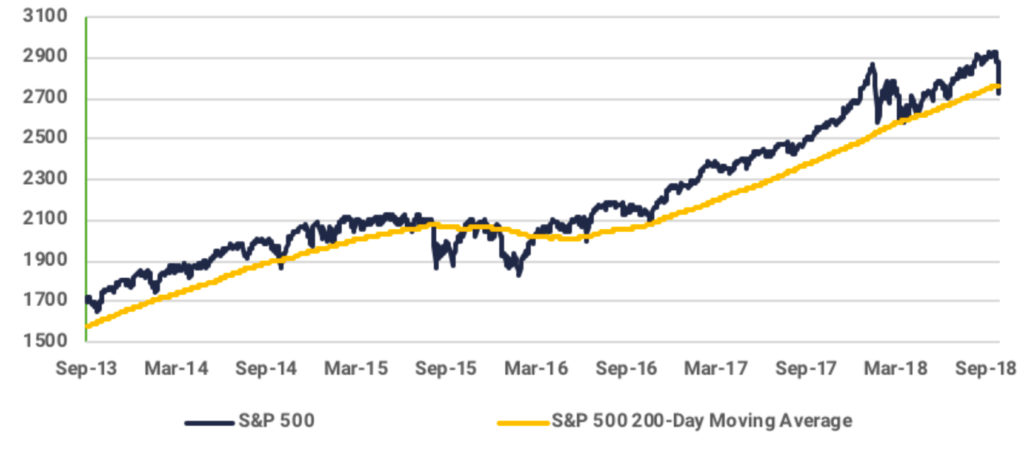U.S. Dips Below Key Technical Level, then Finishes Week Slightly Above it
Last week, the S&P 500 experienced its first 5% or more pullback in 120 calendar days. The pullback was driven by the recent rise in interest rates, profit taking in select momentum stocks (e.g. Facebook, Netflix, Amazon), algorithmic trading triggers when key technical levels were breached and a sell-off in commodities.
While higher rates may have sparked the recent sell-off, last week investors also grew concerned about the negative impact of higher interest rates on future economic growth. The day the sell-off started (Wed) also coincided with the International Monetary Fund cutting their global growth forecasts. This was the first time the IMF cut their growth forecast in two years. They cited risks from “a further inflaming of the trade war between the U.S. and countries including China, and a sharper than expected rise in interest rates.”
In the near term, short-term bounces higher are likely, especially as the speed at which equities declined has created opportunity for contrarian investors who look at indicators such as the relative strength index (which signaled “oversold” last week) and algorithmic traders come in as key technical levels were breached (200 day moving average). However, history would tell us volatility may remain heightened in the near term. First, the S&P 500 did not experience a 1% or more daily move (up or down) in 3Q, that has only occurred in one other quarter since 2Q89 (in 4Q17). Second, history suggests that volatility is higher in mid-term election years from August to the election day than it is the rest of the calendar year.
Verdence View: What we saw last week is normal at this stage of the bull market. Especially with valuations that looked stretched in select areas of the market (growth and momentum names). We believe the solid fundamentals of the economy remain intact and the rise in interest rates is due to better growth. Therefore, we continue to evaluate pullbacks for opportunities. We would prefer to evaluate opportunities that take advantage of the dislocations in the market. For example, value over growth and international vs. the U.S. In addition, emerging markets may be pricing in a more pessimistic outlook for growth and earnings than we foresee.
U.S. Dips Below Key Technical Level: Finishes Week Slightly Above it

